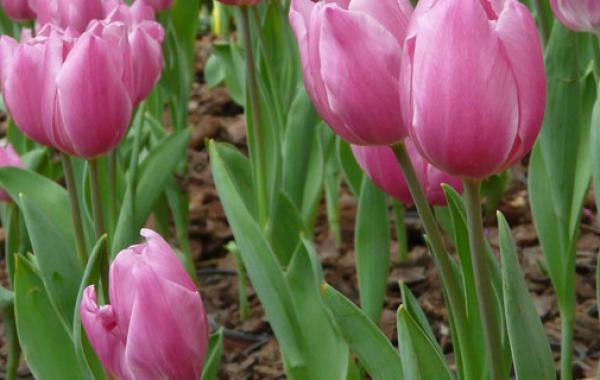How to avoid drug damage to flowers?

How to avoid drug damage to flowers.
Although the use of chemical pesticides can control flower diseases and insect pests, improper use can easily cause flower drug damage, which can be divided into acute drug damage and chronic drug damage. The main symptoms are uniform spots on the leaf surface, curling and scorching at the edge of the leaf, slow plant growth, and even death in serious cases. Therefore, the concentration and dose of pesticides must be strictly controlled. if it is found that the use of standard doses and concentrations of pesticides can not achieve the desired results, the varieties of pesticides should be replaced. Do not mix pesticides at will to avoid drug damage.
First, random mixed use of pesticides: when flower diseases and insect pests occur at the same time, people usually mix insecticides and fungicides, using two or three kinds of pesticides, and some even add foliar fertilizer. If the properties of several pesticides are the same and the pH values are similar, there will be no chemical reaction and no effect on the efficacy, otherwise it will affect the efficacy and cause drug damage. For example, Bordeaux liquid is a suspension made of copper sulfate, quicklime and water, which can prevent and cure a variety of fungal diseases. Its liquid is alkaline and cannot be mixed with common pesticides, nor can it be mixed with stone sulfur mixture and turpentine agent. Otherwise, it will reduce the efficacy and cause drug damage. Therefore, when pesticides are mixed, we must first understand their pharmacological properties, those that can be mixed, and those that cannot be mixed must be used alone.
Second, the spraying time and method are inappropriate: the spraying cycle is too short in different periods of the occurrence of diseases and insect pests, the cycle length of pesticide spraying is different, generally the initial period is once every half a month, and the peak period is once a week. In fact, many pests are difficult to kill and germs are difficult to eradicate. Some flower farmers use drugs frequently, some once every three days, and some even once a day. As a result, the insects are not killed and the disease is not eradicated, but drug damage has occurred in flower seedlings. For this situation, we must strictly grasp the spraying cycle, otherwise drug pests are more difficult to treat than diseases and insect pests. In the prevention and control, attention should be paid to the alternate use of pesticides to prevent pests and germs from producing drug resistance, resulting in frequent application, resulting in drug damage; some flower farmers do not spray the medicine to the key parts when spraying pesticides, and sometimes stay in a certain part for too long, resulting in a large number of potions on the leaves, resulting in flower drug damage, this phenomenon is particularly obvious in the old leaves and large leaves.
Third, the dispensing procedure is not standard: there are many dosage forms of chemicals, such as wettable powders, emulsions, tablets, granules, solutions, etc., some of which can be dissolved directly, while others can not be completely dissolved. When the undissolved particles are suspended in the solution, it is very easy to block the nozzle during spraying, and even if the smaller particles are sprayed from the nozzle, they stay on the leaf surface, causing local drug damage to the plant. Therefore, when dispensing, we should pay attention to strictly follow the procedure, dissolve different dosage forms of pesticides in small containers, then transfer them to large containers, and then transfer them to sprayers after they are completely dissolved or dissolved evenly.
Fourth, the sprayer is not cleaned, and there are other drug residues: in practical operation, flower farmers often use some sprayers as general medicine tools, and sometimes use it to treat a certain type of pesticides, and then put another kind of pesticides without cleaning. As a result, the original pesticide residues are harmful to flowers, especially those such as herbicides, which are even more harmful to flowers.
5. the practice of flowers allergic to drugs has proved that some flowers are allergic to certain pesticides, such as cockscomb and rose are quite sensitive to dichlorvos, and chrysanthemums are sensitive to dimethoate EC with a dilution multiple of less than 1500 times. drug damage still occurs under the circumstances of low drug concentration and standard operation. At present, there is no law to follow the allergic phenomenon of flowers to drugs, and it can only be explored through practice. This requires that in the application of unfamiliar pesticides, drug damage experiments should be done first, so as to reduce the occurrence of drug damage.
First, random mixed use of pesticides: when flower diseases and insect pests occur at the same time, people usually mix insecticides and fungicides, using two or three kinds of pesticides, and some even add foliar fertilizer. If the properties of several pesticides are the same and the pH values are similar, there will be no chemical reaction and no effect on the efficacy, otherwise it will affect the efficacy and cause drug damage. For example, Bordeaux liquid is a suspension made of copper sulfate, quicklime and water, which can prevent and cure a variety of fungal diseases. Its liquid is alkaline and cannot be mixed with common pesticides, nor can it be mixed with stone sulfur mixture and turpentine agent. Otherwise, it will reduce the efficacy and cause drug damage. Therefore, when pesticides are mixed, we must first understand their pharmacological properties, those that can be mixed, and those that cannot be mixed must be used alone.
Second, the spraying time and method are inappropriate: the spraying cycle is too short in different periods of the occurrence of diseases and insect pests, the cycle length of pesticide spraying is different, generally the initial period is once every half a month, and the peak period is once a week. In fact, many pests are difficult to kill and germs are difficult to eradicate. Some flower farmers use drugs frequently, some once every three days, and some even once a day. As a result, the insects are not killed and the disease is not eradicated, but drug damage has occurred in flower seedlings. For this situation, we must strictly grasp the spraying cycle, otherwise drug pests are more difficult to treat than diseases and insect pests. In the prevention and control, attention should be paid to the alternate use of pesticides to prevent pests and germs from producing drug resistance, resulting in frequent application, resulting in drug damage; some flower farmers do not spray the medicine to the key parts when spraying pesticides, and sometimes stay in a certain part for too long, resulting in a large number of potions on the leaves, resulting in flower drug damage, this phenomenon is particularly obvious in the old leaves and large leaves.
Third, the dispensing procedure is not standard: there are many dosage forms of chemicals, such as wettable powders, emulsions, tablets, granules, solutions, etc., some of which can be dissolved directly, while others can not be completely dissolved. When the undissolved particles are suspended in the solution, it is very easy to block the nozzle during spraying, and even if the smaller particles are sprayed from the nozzle, they stay on the leaf surface, causing local drug damage to the plant. Therefore, when dispensing, we should pay attention to strictly follow the procedure, dissolve different dosage forms of pesticides in small containers, then transfer them to large containers, and then transfer them to sprayers after they are completely dissolved or dissolved evenly.
Fourth, the sprayer is not cleaned, and there are other drug residues: in practical operation, flower farmers often use some sprayers as general medicine tools, and sometimes use it to treat a certain type of pesticides, and then put another kind of pesticides without cleaning. As a result, the original pesticide residues are harmful to flowers, especially those such as herbicides, which are even more harmful to flowers.
5. the practice of flowers allergic to drugs has proved that some flowers are allergic to certain pesticides, such as cockscomb and rose are quite sensitive to dichlorvos, and chrysanthemums are sensitive to dimethoate EC with a dilution multiple of less than 1500 times. drug damage still occurs under the circumstances of low drug concentration and standard operation. At present, there is no law to follow the allergic phenomenon of flowers to drugs, and it can only be explored through practice. This requires that in the application of unfamiliar pesticides, drug damage experiments should be done first, so as to reduce the occurrence of drug damage.
Related
- What if the leaves of potted flowers turn yellow?
- Florescence Control of several Flowers
- Anti-freezing technology and post-freezing nursing technology of flowers
- What is the classification of flowers? What are the common methods of flower classification?
- Prevention and control of alkali and acid damage of flowers in courtyard
- Technology of Anti-freezing and restoring growth of Flower seedlings in greenhouse and greenhouse
- How does flower fertilization not hurt the root? Fertilization technology of flowers
- Key points of disinfection in flower greenhouse
- Several pesticides that are banned or used cautiously in flowers
- How to fertilize the flowers that watch the leaves?



